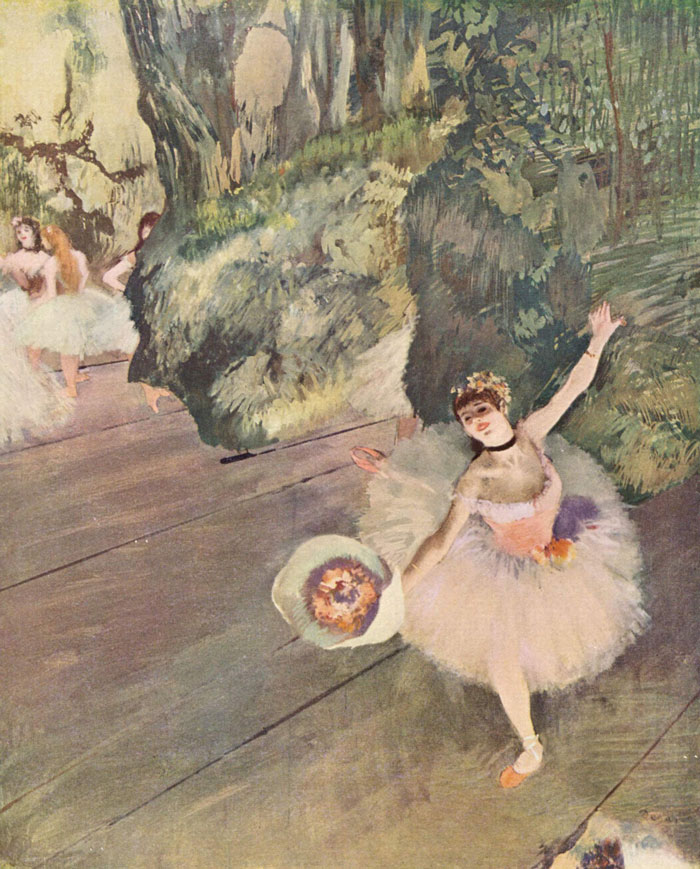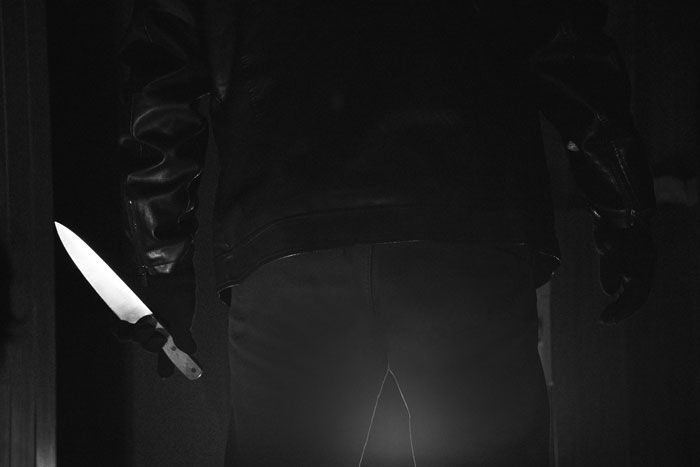
There’s A Theory That Jack The Ripper Was Edgar Degas, A Painter Who Painted The Ballerinas
Interview With AuthorUsually, when you go on TikTok, you don’t expect somebody to convince you of something you never even thought about. For example, an artist who painted various pictures of ballerinas, which are hanging in little girls’ rooms to this day, was actually not such a wholesome person. What if he was the infamous Jack the Ripper, whose identity is still raising questions today, even though it all happened in the 19th century? While it sounds weird at first, when you lay out all the facts, the theory starts sounding quite convincing, and it managed to collect many folks’ online attention. So, let’s dive in, shall we?
More info: TikTok
Jack the Ripper’s identity is causing debates to this day, even though he committed crimes back in the 19th century
Image credits: schirrgenius
One of the theories in this debate was shared on TikTok, where a woman explained the evidence that made her believe that Jack the Ripper was actually the famous artist Edgar Degas
On April 18, 2024, the TikTok creator @schirrgenius, to whom Bored Panda reached out for additional context, posted a video explaining her theory that Jack The Ripper might have been Edgar Degas. As comments under the video showed, many people were convinced by this theory. And not only them. The OP revealed to us that she’s been contacted by TV producers with an offer to turn it into a Netflix-style series.
If you’re not aware of the historical figures involved in this theory, we’re here to help. Jack the Ripper was a serial killer active in and around the Whitechapel district of London, England, in 1888. Jack’s victims typically were so-called ladies of the night, whose throats were cut before their abdominal mutilations. The name Jack The Ripper originated from the “Dear Boss letter” written by a person who claimed to be said murderer.
The killer was never officially identified, thus the crimes that are considered to be linked to him were never solved. This has led to many theories on who he could have been.
Edgar Degas was a French Impressionist artist who lived from 1834 to 1917. To this day, he is still famous for his pastel drawings and oil paintings, as well as bronze sculptures, drawings, and prints. A lot of his work’s subjects were female figures — for example, ballet dancers.
Image credits: schirrgenius
“Do the pretty paintings of ballerinas that hang in little girls’ rooms to this day, were they painted by a murderer?”
Image credits: Edgar Degas
Watch the video here:
@schirrgenius♬ original sound – Kiki Schirr-Genius
We mentioned the years Edgar Degas lived for a reason. Do you see how Jack the Ripper’s terror years can easily fit into that period? Well, this isn’t the only coincidence that makes Degas a possible candidate for the killer’s title. All of these coincidences, along with the time period similarity, were highlighted by the TikTok creator in her video. Let’s take a look at them.
Edgar Degas was a bit misogynistic throughout his whole life, but around his early 50s, he became an awful misanthrope who people did not want to be around. As we know, Jack the Ripper mainly killed women of the night, which was likely his expression of hate towards women he thought very little of.
Also, the subject of many of Degas’ works — ballerinas — were very commonly ladies of the night, and it is visible in the paintings, as there are dark shadows in the background of the men trying to arrange a night with them. Also, quite a lot of his paintings were about women’s bodies and had no faces.
The creator said that most psychopaths and all serial killers have a dead spot in their brain right behind their eyes. And Edgar Degas was going blind over time quite likely due to his inherited Stargardt’s disease. With this disease, the area behind the eyes can go black, and gray matter activity in that region stops when the loss of visual input causes decay.
You might try to debunk the theory by saying that Jack the Ripper was raging in London while Degas lived in Paris, but @schirrgenius argues that even back then, the cities were a short train ride away. Edgar surely took this train ride, as there are records of his friend James McNeill Whistler, who lived in London, chiding him for no longer coming over for lunch.
During the time of two of Jack’s murders, Degas was on a two-week trip to southern France. There, he wrote numerous letters to his most famous friends, some of whom he had never written to before. And the number of letters written during these two weeks was greater than, for example, five years before or after that. It looks like he was setting himself an alibi, doesn’t it?
Image credits: Daian Gan (not the actual photo)
As we previously said, there are plenty of theories surrounding Jack the Ripper and his identity. One of these is that he must have been a surgeon or at least very knowledgeable in human anatomy, as he removed several organs from his victims and knew where to cut a neck to murder them. Edgar Degas, as a classically trained artist, had attended human dissections and was obsessed with understanding how human bodies work. Also, in many of his pastels, the darkest line on the woman is the line of a ribbon tied around her neck.
Also, it seems that neither Jack the Ripper nor Edgar Degas was interested in sexually assaulting women. They just wanted to know their inner workings — Jack by killing and mutilating them and Degas by painting them (or maybe both, if the theory is right?).
Besides, it is known that Jack the Ripper stole his victims’ organs, but no one knows where he put them. What if Degas was, in fact, this murderer, and he put them into his wax sculptures, a medium often used for organ preservation at the time? After all, the OP revealed that when some of Degas’ sculptures were X-rayed, it was found that some of them contained organic material. And while no one, at least right now, can know for sure what it was exactly, maybe those were organs? Dark, isn’t it? And that’s not even the last of the evidence.
Image credits: Hamed Mohtashami pouya (not the actual photo)
Some of the murders Jack the Ripper committed were “pinned” on Jewish people with Goulston Street graffito, which was written in chalk in a way no English speaker would spell it. All of these details fit Degas, as he was an open French antisemite who was a pastel artist; hence, he likely carried chalk on him at all times.
Yet, this video doesn’t even contain all the evidence the woman has collected for her theory, as there are other videos on her account discussing some additional things or delving into some mentioned things deeper. What we can say is it’s a very well-done theory, and there’s no question why it convinced so many people!
While the given points in the theory sound quite convincing, the originator herself noted: “The big challenge in this is that any evidence against a suspect will at best be circumstantial. Proving guilt to modern and ethical standards is impossible because all evidence was gathered prior to sterile collection. 1888 even predates the use of fingerprints in criminal prosecution, so there was no reason for police to limit the handling of evidence.”
Additionally, the evidence that has the best credibility in the woman’s eyes has disappeared over the years. For example, in the “From Hell” letter, another person claims to be Jack the Ripper in a written form.
So, sadly, we will never be able to know for sure whether this theory is right or not. Maybe the painter of beloved ballerinas is actually a murderer named Jack the Ripper? After all, some people in the comments said that they were always creeped out by those paintings. Maybe for a reason?
And even if he wasn’t the infamous Jack, all this evidence put into one place doesn’t paint him (pun intended) as the best person ever, so maybe he was still committing some creepy and lethal stuff, even if he wasn’t the murderer in London. Either way, the theory will surely make you look at the ballerinas’ paintings a bit differently now.
Many people in the comments shared that after hearing all of this evidence laid out, it made sense why Degas’ paintings always seemed eerie to them
London was not a train ride away from Paris until 1994. If you want to convince me you've been through the evidence paying attention to detail, that's something to get right.
Thank you, had severe doubts about this as well. Also, I thoroughly doubt the credibility of the 'dead spot behind the eyes' thing and how that correlates to the artist going blind. There's SO many ways in which one could lose their eyesight, that do not at all involve a very specific spot behind the eyes to go dark. That sounds very made up.
Load More Replies...This theory doesn't hold up. Degas was pompous artist who was difficult to get along with and took his art very, very seriously. Nothing in the theory is out of the ordinary for serious artists and it's not unusual for them to focus on one subject, especially female bodies. A lot of men were just that misogynistic. I still believe Jack was a surgeon, or even a mortician.
I found this which says qith changing horses at every possible place it would take 48hrs ish. Dependant on tide etc. But that was also for a postal worker who might be more used to lengthy horse riding than a half blind artist who was off on a whim to go and murder. Oh and of course the matter of "notes" means that she must be believable. No Degas wasn't necessarily a nice person, doesn't mean he was a killer. I also think maybe his loss of eyesight, so valuable to his work would have made him less prone to being a joy to be around
Forgot to out the link in 🤦♀️ https://history.stackexchange.com/questions/55403/was-it-possible-for-a-message-from-paris-to-reach-london-within-48-hours-in-1782#55420
Load More Replies...London was not a train ride away from Paris until 1994. If you want to convince me you've been through the evidence paying attention to detail, that's something to get right.
Thank you, had severe doubts about this as well. Also, I thoroughly doubt the credibility of the 'dead spot behind the eyes' thing and how that correlates to the artist going blind. There's SO many ways in which one could lose their eyesight, that do not at all involve a very specific spot behind the eyes to go dark. That sounds very made up.
Load More Replies...This theory doesn't hold up. Degas was pompous artist who was difficult to get along with and took his art very, very seriously. Nothing in the theory is out of the ordinary for serious artists and it's not unusual for them to focus on one subject, especially female bodies. A lot of men were just that misogynistic. I still believe Jack was a surgeon, or even a mortician.
I found this which says qith changing horses at every possible place it would take 48hrs ish. Dependant on tide etc. But that was also for a postal worker who might be more used to lengthy horse riding than a half blind artist who was off on a whim to go and murder. Oh and of course the matter of "notes" means that she must be believable. No Degas wasn't necessarily a nice person, doesn't mean he was a killer. I also think maybe his loss of eyesight, so valuable to his work would have made him less prone to being a joy to be around
Forgot to out the link in 🤦♀️ https://history.stackexchange.com/questions/55403/was-it-possible-for-a-message-from-paris-to-reach-london-within-48-hours-in-1782#55420
Load More Replies...























-15
20